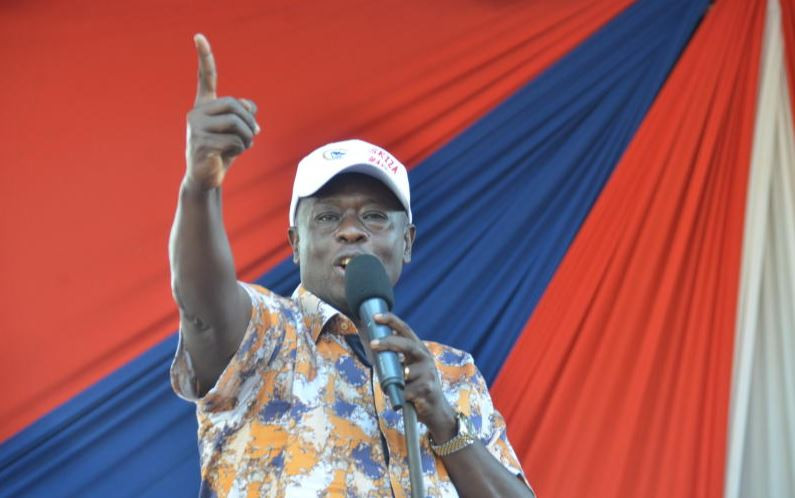By Harold Ayodo
Local scientists have bred a new disease and drought—resistant wheat variety — Njoro-BW1.
Prof Miriam Kinyua, a lecturer at Moi University, led the team that produced the variety using induced mutation — a novel nuclear plant breeding technique.
The high yielding variety produces excellent baking flour and is resistant to wheat rust, a virulent strain of fungus that threatens wheat crops.
"The wheat will reduce farmers expenses as the disease-resistant traits keep insects at bay," Prof Kinyua says.
The variety is environmentally friendly because it needs fewer pesticides.




According to the International Atomic Energy Agency (IAEA), nature provides every species with the potential to develop different characteristics such as height, yield and susceptibility or resistance to disease. All of these possibilities are written into a plant’s blueprint — its genome — but only a few are expressed. Over millions of years, a plant can adapt to different conditions through spontaneous mutation and natural selection.
Kinyua says radiation speeds up the otherwise slow process of improvement of biological qualities.
"The method induces the plant to adopt qualities that make it high yielding and pass the same to its offspring," she says adding: "We selected crops that showed the best characters for field trials and finally opted for Njoro-BW1 variety."
Further trials to confirm the findings were done in Naivasha, Lanet, Marigat, Lower Narok, Mweiga and Njoro.
The wheat grains were also sent to the IAEA for irradiation as part of the five-year research. Kinyua says investment in the technique could boost efforts to address the food crisis. "Food shortages and sky-rocketing prices are pushing millions of people deeper into poverty and hunger," Kinyua says. Njoro-BW1 is now grown on more than 24,700 acres and the Government is educating farmers on the variety.
"Agricultural officers are sensitising farmers during their extension work, field days and agricultural shows," she says.
The initial research was done at the Kenya Agricultural Research Institute (Kari) in Njoro in Nakuru District.
Kinyua, who led the research, says Kari and the IAEA were involved in the baseline study that started in 1996.
"The study costs about Sh10 million annually," she says.
Stay informed. Subscribe to our newsletter
According to the Government, wheat is the second most important cereal crop after maize but the country meets only a third of its needs and imports the rest.
Varieties
Kinyua says nuclear technology is safe and cost-effective.
Njoro-BW1 is among the more than 3,000 crop varieties of 170 different plant species that were produced using the technique that has been certified through intervention of the IAEA.
The technology has been successful in the production of high yielding and disease resistant varieties of rice in the Mekong Delta of Vietnam. "The global nature of the food crisis is shocking as families around the world are struggle to feed themselves," said IAEA Director General Mohamed ElBaradei in a statement that endorsed the use of nuclear technology in crop breeding to fight hunger.
"To provide sustainable, long-term solutions, we must make use of all available resources in food production," he said.
Barley
The technology has produced better varieties of barley in Peru. The US, Pakistan, India, South Africa, Zimbabwe, China, Egypt, Ghana, Italy, Japan, Scotland, Sudan and Turkey have adopted the technology.
IAEA scientists are working with plant breeders in several African countries to use the technique in production of cassava.
The experts want to enhance the nutritional content, yield and disease resistance of cassava in Sub-Saharan Africa.
Cassava is vulnerable to the mosaic virus, and its roots contain hydrogen cyanide, which makes them poisonous if consumed without processing.
The crop is grown by subsistence farmers who do not properly prepare the soil for planting, resulting in very low yields.